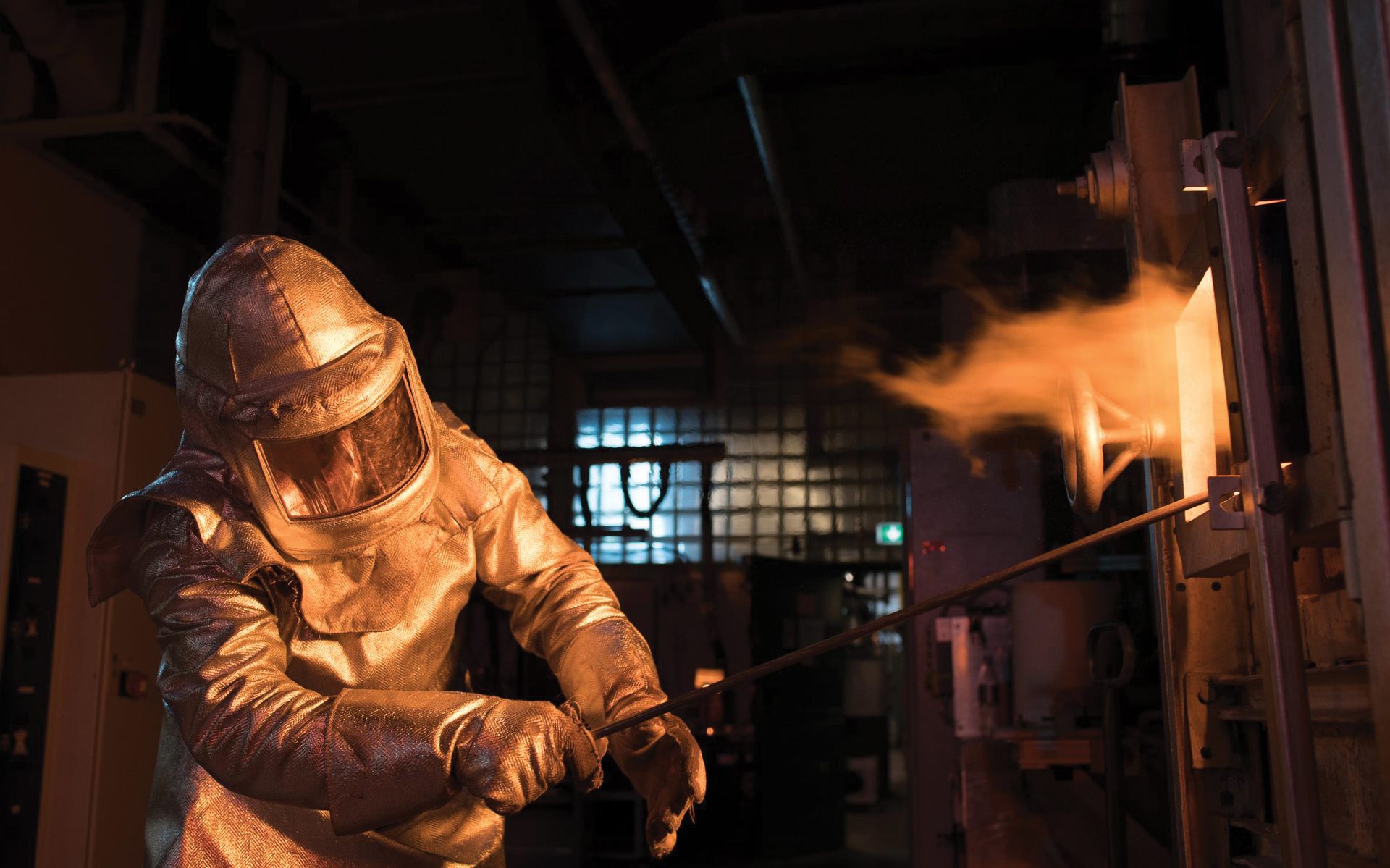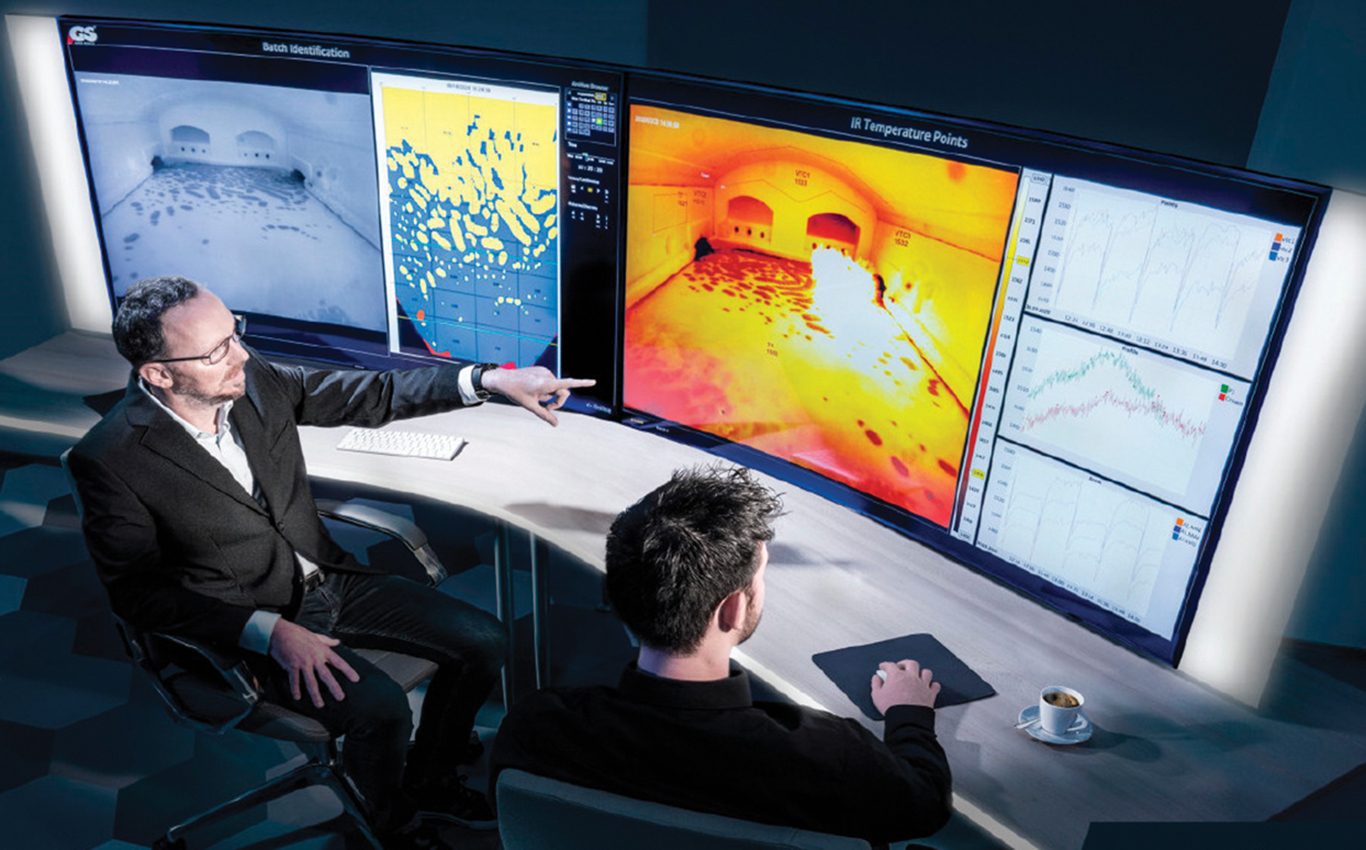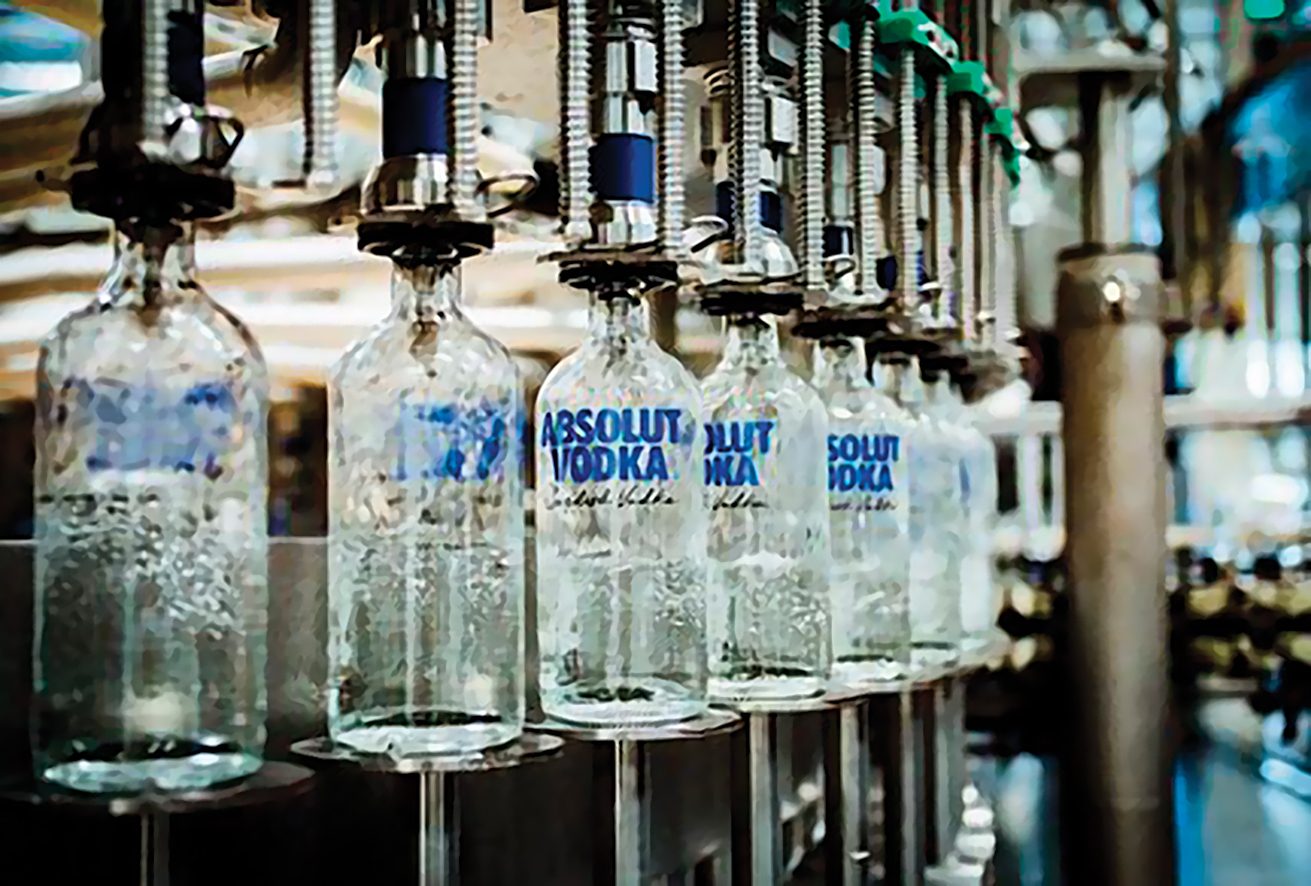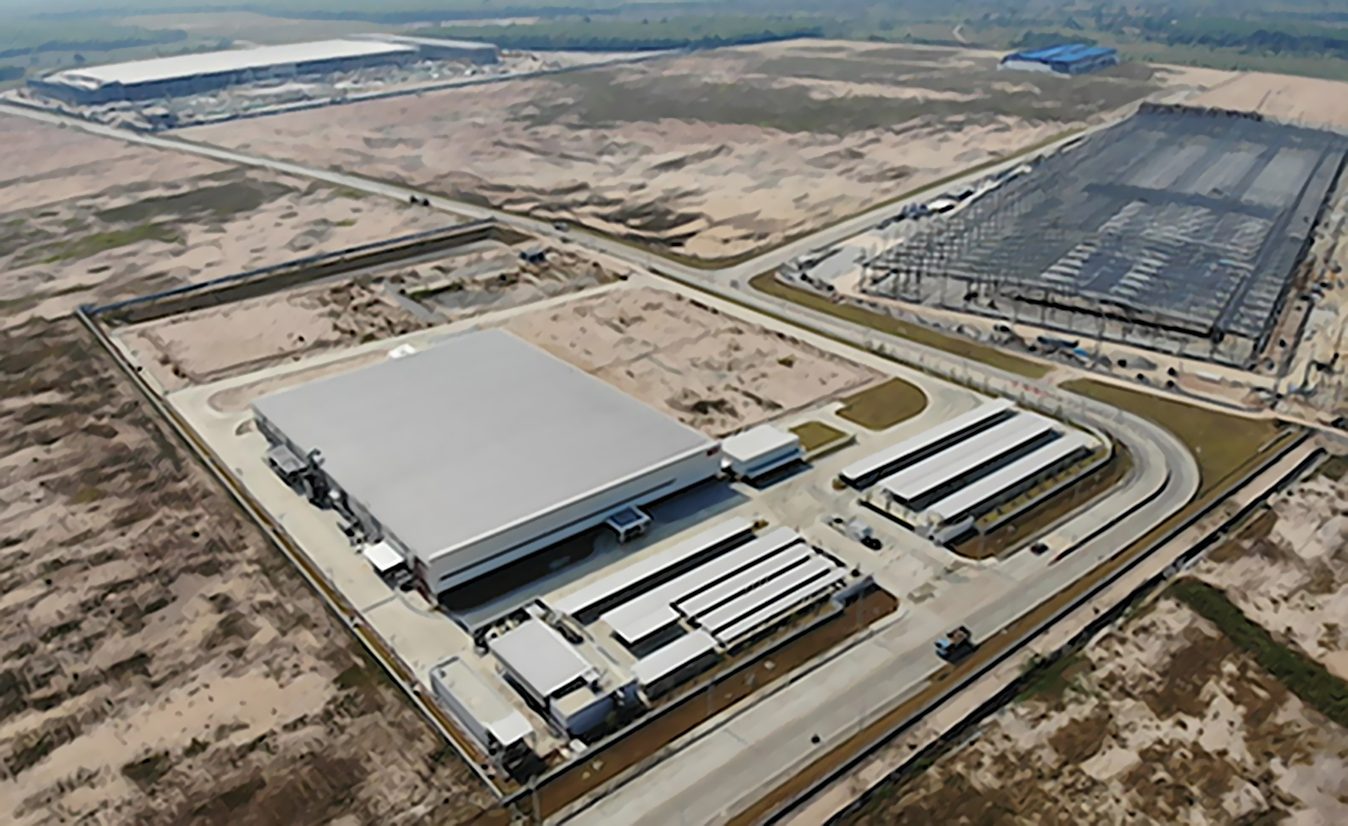
Weathering the storm:
How manufacturers are coping with volatile energy costs
By David Holthaus

The energy-intensive glass and ceramic industries are especially vulnerable to energy costs. Credit: Schott

The energy-intensive glass and ceramic industries are especially vulnerable to energy costs. Credit: Schott
As a cost of doing business, energy has been relatively cheap for many years. That changed in 2022, when a variety of factors—notably a war started by one of the world’s leading natural gas suppliers—caused energy prices to spike.
In Europe, wholesale gas prices hit an all-time high in August 2022. Shortages and blackouts were feared as Russia cut its gas exports to the continent when the European Union initiated sanctions over the war in Ukraine.
In the U.S. in 2022, the natural gas spot price hit its highest annual average since 2008, according to the Energy Information Administration. A decline in U.S. production, combined with increased demand from Europe and weather-driven demand in the States, all contributed to the price surge.
Fortunately, 2023 has been a different story. In Europe, natural gas prices normalized back to pre-war lows, according to SEB Research, a division of the Swedish investment bank. Reduced industrial consumption, increased exports from the U.S. and other alternative suppliers, and a relatively mild winter combined to bring prices back in line, the firm says.
In the U.S., reduced consumption (thanks to a mild winter) and increased natural gas production resulted in natural gas prices dropping 40% from December 2022 to January 2023. The Energy Information Administration forecast that prices would, on average, drop 50% in 2023 from last year’s spikes.
ADVERTISEMENT
Rising energy costs still a threat, execs say
Despite the reprieve from price increases, energy costs remain a top concern for business leaders. That can be seen in a study of 2,300 executives around the world commissioned by ABB Electrification, a division of Zurich-based conglomerate ABB Ltd. Published in March 2023, the findings show that energy costs and stability challenges are impacting businesses across the board, with 74% of survey respondents saying rising costs are a “major” or “moderate” threat to their companies’ competitiveness.
Over the last year, higher energy costs caused businesses to reduce spending in other areas (34% cited this impact) and reduced profit margins (also 34% of respondents). Executives say dealing with energy challenges may outweigh spending normally considered necessary to remain competitive, including employee recruitment; retaining or developing talent, salaries, overtime, and bonuses; and investing in new technology for greater productivity.
Apart from reductions in investment in the workforce, businesses also reduced spending in other key areas as a result of energy challenges, including technology (38%), infrastructure (33%), marketing (31%), manufacturing (27%), and research and development (18%).
Looking out over the longer term (3–5 years), if energy costs and uncertainty persist, businesses anticipate further spending and investment reductions in similar areas to the last year, with the main impacts being employee-related, including staff recruitment (42%), compensation (38%), and training and development (37%). Respondents say other affected areas would include spending on technology (37%), infrastructure (34%), and marketing (33%).
Much of the concern can be attributed to the inherently volatile nature of energy costs and the knowledge that the factors that contributed to the spikes in 2022 are still with us. The war in Ukraine is still raging, and an unpredictable climate means a harsh winter could push consumption to the point that prices surge again.
On top of that is global economic uncertainty, particularly concerning China. The country ended its strict zero-COVID policy in December 2022, reopening its borders and moving away from the testing and quarantine orders that slowed its economy over the last three years. China’s economic growth of 3% in 2022 was its slowest in decades. The International Monetary Fund now predicts growth of 5.2% in that country, the world’s second-largest economy, this year. Stronger growth in China could mean steeper global demand for gas, possibly exerting upward pressure on prices.
“Energy cost inflation, volatility, and supply insecurity are a problematic combination that need monitoring closely,” says Morten Wierod, president of ABB Electrification.

Glass Service Inc. experts use artificial intelligence software to measure batch and temperatures in a furnace analysis. Credit: Glass Service Inc.

Glass Service Inc. experts use artificial intelligence software to measure batch and temperatures in a furnace analysis. Credit: Glass Service Inc.
Coping with cost volatility
With the memory of last year’s energy spikes still fresh, manufacturing leaders can take steps to improve their energy resiliency. Among the cheapest steps are basic efficiency measures, says Michael Lyda, a technical supervisor with Advanced Energy, a North Carolina-based nonprofit energy consulting firm.
“Energy efficiency is the low-hanging fruit,” he says.
Old lighting technology can be replaced to create near-immediate savings, Lyda says. Simply turning the lights off at times and in places where they are not needed will add up, and dropping the use of old, inefficient technologies will yield savings.
“Only use energy when it needs to be used,” he says.
Business leaders are becoming conscious of their companies’ energy usage, and more to the point, of the energy waste in their companies’ processes, the ABB survey found. Thirty-four percent say they have increased investment focused on improving energy efficiency, while 22% say they are switching off lights and equipment when not in use. Twenty-two percent report using less heating or air conditioning in their operations.
For example, Saint-Gobain, the Paris-based materials manufacturing giant, recently received an award from the U.S. Department of Energy for implementing a smart energy management system at its gypsum plant in Buchanan, N.Y.
The system was designed in-house and consists of more than 180 energy meters that allow employees to track and contextualize energy data, forecast future energy use, and tackle actual losses once they are identified. Within the first three months of installation, the system helped identify several opportunities to reduce energy use and enabled the plant’s team to identify process changes and projects to address them, the company says. The company plans to deploy similar technology at some of its 145 manufacturing sites throughout the U.S.
Lyda says his company can work to help industries meet the ISO 500001 energy standard. The standard provides a framework of requirements for organizations to develop an energy management system by creating policies for more efficient use of energy, fixing targets and objectives, using data to better understand and make decisions about energy use, and measuring the results for continuous improvement. It is a standard that is more often practiced in Europe than in the U.S. due to European Union directives, Lyda says.
Energy efficiency becomes especially critical in the glass and ceramic manufacturing industries, as the processes are so energy intensive, with furnaces reaching temperatures of more than 1,500°C for the melting and refinement of raw materials.
Glass Service Inc., a company based in Vsetin, Czechia, has been in business for 33 years and has developed technologies to help optimize furnace efficiency. The company offers experience in furnace engineering, data analysis and auditing, and furnace monitoring, and it can provide mathematical simulation studies to model the combustion and discover methods to improve efficiency, says Erik Muijsenberg, vice president.
Glass Service has conducted simulation studies of more than 800 furnaces around the world, Muijsenberg says.
“Energy has become more expensive and decarbonization is important,” he says. “We want to find a solution using less or no fossil fuels.”
The company is working to develop technologies that are greener and more efficient, including developing a hydrogen burner, as well as melters that are all electric or use hybrid sources of energy.
“There’s more need than ever before to make these changes available,” Muijsenberg says.
SIDEBAR
Hydrogen fuel projects will test a developing technology
By David Holthaus
In the energy-intensive glass and ceramic manufacturing industries, decarbonizing the heating and firing processes is a major challenge. Hydrogen is one technology that holds promise for replacing natural gas. However, the technology is still under development and is years away from being commercially available on a broad basis, says Erik Muijsenberg, vice president of Glass Service, Inc. a Vsetin, Czechia-based consulting firm that works with glass and ceramic makers to optimize their furnace technologies.
“I see a very big future for hydrogen, but not in the next 10 or 15 years,” Muijsenberg says.

Ardagh Glass will manufacture Absolut Vodka bottles in a hydrogen fuel pilot project. Credit: Absolut Vodka

Ardagh Glass will manufacture Absolut Vodka bottles in a hydrogen fuel pilot project. Credit: Absolut Vodka
The hydrogen fuel technologies available now are more expensive than natural gas, and they are not necessarily very efficient or green, as much of the hydrogen produced now is based on fossil fuels, Muijsenberg explains. But there are many projects under way that will provide data and help the technology to be developed for wider use.
Ardagh Glass Packaging in Limmared, Sweden, a subsidiary of Ardagh Group, signed an agreement with Absolut Vodka to use a partly hydrogen-fired glass furnace for large-scale production of the vodka maker’s glass bottles. Ardagh’s Limmared facility currently uses a combination of natural gas and electricity to power its furnaces. In the second half of 2023, Ardagh will launch a pilot replacing 20% of its natural gas with green hydrogen to manufacture all of Absolut’s bottles. The hydrogen will be produced onsite at Ardagh by using renewably sourced electricity.
“There are challenges with such innovation, but we are committed to being an early mover in future-proofing our glass manufacturing operations worldwide,” says Bo Nilsson, managing director of Ardagh Glass Limmared AB.
In December 2022, glass manufacturer Encirc and spirits giant Diageo announced a partnership to build a new furnace at Encirc’s Elton plant in Cheshire, U.K., which will reduce carbon emissions by 90%, with an energy mix of green electricity and low carbon hydrogen. The process will produce up to 200 million Smirnoff, Captain Morgan, Gordon’s, and Tanqueray bottles annually by 2030, the companies say.
The U.K. has been a leader in developing the infrastructure for hydrogen technology. Its HyNet project aims to produce, store, and distribute hydrogen, as well as capture and store carbon, throughout the northwest of England and North Wales.
Saint-Gobain in March 2023 carried out a test production of flat glass using more than 30% hydrogen at its Herzogenrath site in Germany. With the test, the company says it “has proven the technical feasibility of manufacturing flat glass with a significant proportion of hydrogen.”
Ceramics manufacturer NGK says it has been conducting hydrogen flame evaluation tests in a test furnace installed near its headquarters in Nagoya, Japan, since January 2022. The company says it will install a new firing furnace at a hydrogen combustion test field in Tokai, Japan.
These and many other projects could provide the investment and information needed to scale up the use of low-carbon hydrogen as an alternative fuel for industries.
Moving forward with alternative energy sources
But high energy costs may, paradoxically, result in diverting or delaying investments meant to help achieve decarbonization commitments, the ABB survey found. More than half (58%) of the respondents say the cost of energy could delay achieving their sustainability and carbon reduction targets by anywhere from one to five years.
At the same time, 40% say they were “very concerned” about the security and reliability of their businesses’ energy supply, and many are moving forward with plans to take action over the next 12 months, including installing onsite, renewable energy sources (40%), such as solar or wind, or procuring renewable power under long-term power purchase agreements (36%).
CoorsTek, the Golden, Colo.-based manufacturer of technical ceramics, is one company proceeding with plans to reduce its carbon footprint. In March 2023, the company signed a long-term agreement with TotalEnergies ENEOS for a 1.5 megawatt-peak rooftop and carport solar photovoltaic system at its 110,000-square-foot manufacturing facility in Rayong, Thailand. The system is expected to generate about 2,000 megawatt-hours of renewable electricity annually, realize significant cost savings, and reduce the company’s carbon footprint by about 840 metric tons of CO2 emissions per year.
“It’s our first foray into onsite renewables,” says Dara Ward, CoorsTek’s corporate sustainability manager. “It’s something that our leadership is very committed to seeing played out globally.”
CoorsTek broke ground on its Rayong facility in January 2021 and began operations in January 2022. The facility is a production hub for Southeast Asia.
“It’s a really perfect opportunity for us to evaluate solar because we would have a brand new roof and a lot of space,” Ward says.

The CoorsTek facility in Rayong, Thailand, where a rooftop and carport solar photovoltaic system will be installed. Credit: CoorsTek

The CoorsTek facility in Rayong, Thailand, where a rooftop and carport solar photovoltaic system will be installed. Credit: CoorsTek
Under the agreement, TotalEnergies ENEOS will finance, install, and operate the system. The company is a 50/50 joint venture between TotalEnergies and ENEOS to develop onsite, business-to-business solar distributed generation across Asia. It is headquartered in Singapore and plans to develop 2 GW of decentralized solar capacity over the next five years. CoorsTek will purchase the solar electricity generated for the duration of the contract. CoorsTek plans to take the learnings from the project and apply them at other plants, Ward says.
CoorsTek also works with utilities at some of its sites to implement strategic energy management programs to identify opportunities for efficiencies and savings, Ward says.
On the natural gas side of things, “We see a lot of volatility,” Ward says. “So we’re always looking at ways to hedge and reduce our consumption because that’s the best way to become more resilient against these rising prices.”
SIDEBAR
Advanced nuclear reactors hold promise for clean, efficient energy
By David Holthaus
Nuclear energy has acquired a poor image over the years. As a result, the development of a promising technology that could help further the decarbonization of the planet has been slowed.
Major nuclear reactor incidents at Three Mile Island in the United States, Chernobyl in Ukraine, and, most recently, Fukushima in Japan have demonstrated how serious problems can be at such sites. Some older nuclear plants were decommissioned and closed, and nuclear now accounts for only 10% of the world’s energy production, according to the World Nuclear Association.
But nuclear technology has advanced to the point where small, modular nuclear reactors—and even microreactors—may soon be providing low-carbon, efficient energy for manufacturers and power suppliers. Several companies are developing advanced reactors using different technologies that promise to be safer and easier to deploy than conventional nuclear technology.
“All of them have the potential to compete globally once deployed, and they will offer consumers more access to a reliable, clean power source that can be depended on in the near future to flexibly generate electricity and drive industrial processes,” says the U.S. Department of Energy.
The DOE’s Advanced Reactor Demonstration Program (ARDP) is supporting several projects.
TerraPower is a Bellevue-Wash.-based company founded by Bill Gates that is working on a demonstration project for a sodium fast reactor in Kemmerer, Wyo., in collaboration with PacifiCorp, a utility that is retiring a coal-fired plant in that community. In fall 2022, the two companies announced they would study the feasibility of deploying up to five additional small modular reactors and integrated energy storage systems in the PacifiCorp service territory by 2035.
X-Energy Reactor Company, based in Rockville, Md., is developing the first grid-scale advanced nuclear reactor for an industrial site in North America. The company is working with materials science company Dow and intends to install a high-temperature, gas-cooled reactor plant at one of Dow’s U.S. Gulf Coast sites. The companies say the site will be selected sometime this year.
“From the beginning to the end of the supply chain, our technology can supply both power and heat to businesses in most sectors of the economy to help limit their carbon footprint,” says J. Clay Sell, X-energy CEO. X-energy was selected by DOE in 2020 to receive up to $1.2 billion under the ARDP in federal cost-shared funding to develop, license, build, and demonstrate an operational advanced reactor and fuel fabrication facility by the end of the decade.

A rendering of a Westinghouse eVinci microreactor plant. Credit: Westinghouse

A rendering of a Westinghouse eVinci microreactor plant. Credit: Westinghouse
Westinghouse, based in Pittsburgh, Pa., is in the process of licensing its eVinci microreactor that is designed to provide five megawatts of electricity for more than eight years without refueling. The eVinci is factory built and assembled before it is shipped in a container to its location. Westinghouse says it can be used for electricity and heating for remote communities, universities, mining operations, industrial centers, data centers, and defense facilities. Westinghouse says the passive safety features of its design allow the reactor to operate and achieve safe shutdown without the need for additional controls, external power sources, or operator intervention, enabling highly autonomous operation.
BWX Technologies, Inc., based in Lynchburg, Va., is building an advanced, transportable, nuclear microreactor under a contract awarded by the U.S. Department of Defense. The company says the transportable microreactor will “deliver clean, zero-carbon energy where and when it is needed in a variety of austere conditions for not only the DoD but also potential commercial applications for disaster response and recovery, power generation at remote locations, and deep decarbonization initiatives.” The company expects it to be completed and delivered to the Idaho National Laboratory in 2024 for testing.
The DOE is using its National Reactor Innovation Center at the Idaho National Laboratory to test these innovations. It has awarded grants to help support their development and demonstration over the next several years, it says.
“These aggressive timelines are needed to ensure the United States takes advantage of the advanced reactor market that’s expected to be worth billions of dollars,” the agency says. “That’s why we plan to invest more than $600 million in these projects over the next seven years, pending the availability of future appropriations by Congress.”
Specialty glass maker Schott is another company moving forward in the face of global economic challenges. Schott is based in Mainz, Germany, and operates in more than 30 countries. The company is switching to 100% green electricity and has made a 60% reduction in its carbon emissions. Schott uses natural gas to fire its furnaces, but electricity is its next largest energy source. Schott is relying on renewable, independently verified, green sources of electricity. Since last year, the company also relies on power purchase agreements, or contracts with operators of renewable energy plants such as wind farms.
“Globally, we are experiencing a lot of economic uncertainties,” says Jens Schulte, a board member and head of Schott’s zero carbon program. “However, we don’t want these to negatively impact our progress in the fight against climate change.”
NGK Group, the Nagoya, Japan-based maker of high-performance ceramics, set an incremental goal of cutting emissions by 25% by 2025 compared to 2013 levels. As one of its strategies for meeting its target, the company is installing solar at its manufacturing plants in Poland and Thailand. In Poland, it is installing a large-scale photovoltaic system with a total capacity of 15.1 MW on the roofs of two factories and on neighboring land at one of them. In Thailand, it is installing a system with a total capacity of 4.25 MW on the rooftops of its buildings there.
These and many other projects are promising developments, but large-scale, industrywide conversion away from natural gas to renewable sources is a long-term and expensive prospect. For green energy sources to be made available on an industrial scale, it will require infrastructure investments by energy suppliers and grid operators.
“The electricity network, the electric infrastructure, needs to be increased,” Muijsenberg says. “That will be a challenge for industry.”
He sees the energy supply transition taking 10 to 15 years, as furnaces cannot be replaced at any time because they have defined lifetimes and are planned in investment cycles.
Until then, forward-thinking manufacturers will continue to invest in efficiency measures and renewable energy sources so they can weather the volatility of energy markets.


